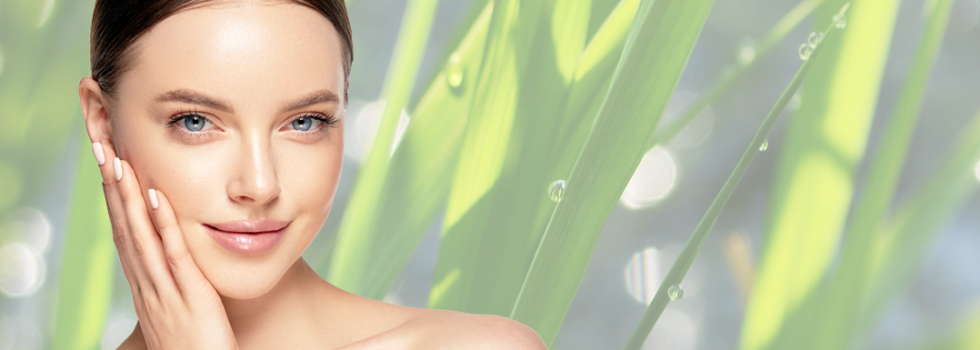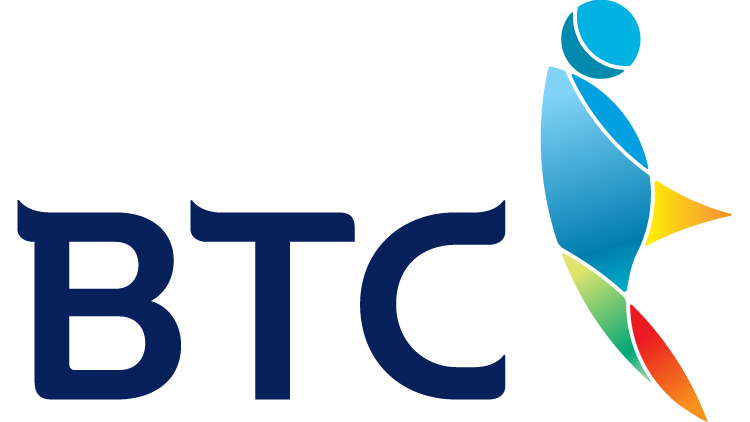Promotional Features
Wild rice and the science behind its collagen-boosting properties
The consumer search for natural solutions to tackle health issues is rising in importance, and products that can provide scientifically-backed solutions are set to succeed.
According to a survey by Accenture, consumers view products that are able to help them in ‘health’ and ‘wellness’ as an essential spend category.1 The research found that 80% of respondents expected to maintain or increase their spending on health and fitness in the next year, even when 66% said they felt ‘squeezed financially’. This highlights how people are prioritising products that are able to provide proven benefits in health and fight the ageing process. This is seen in the growth of the skincare market, where the global market is expected to increase by 3.64% compound annual growth rate through to 2028.2
Though the pandemic focused global attention on overall health, there are longer-term trends that are placing the focus on health and, specifically, on skin health. By 2050, the World Health Organization (WHO) expects the world’s population of people aged 60 years and older to double, reaching 2.1 billion individuals.3 The process of ageing brings with it a desire by many people to reverse the signs of skin ageing, which is brought about by a reduction in the skin’s strength and elasticity. It is not just ageing that brings changes to the skin, exposure to UV rays, stress, nutritional imbalances, pollution, and lack of sleep can all have a negative impact on skin health. All of these factors are on the rise due to modern lifestyles.
The potential of wild rice
One herb that has been used for centuries to improve skin appearance and overall health is Zizania latifolia, also known as wild rice and water bamboo. The herb has been commonly used in Asia to detoxify the body, cure facial blush, and as an anti-allergy, anti-oxidation, anti-inflammatory tool. Z. latifolia is widely consumed as a health food worldwide, especially in Asia, North America, and the European Union.
In recent years, there has been increasing interest in the potential of the flavone tricin (5,7-Dihydroxy-2-(4-hydroxy-3,5- dimethoxyphenyl)-4H-chromen-4-one) to provide various health benefits to the human body. The range of benefits that have been discovered through research include the potential to aid in cancer treatment, and to help reduce oxidative stress in the human body.4,5
Increasingly, the compound is also being researched for its uses in improving skin health as a plant-based collagen booster. Studies have found that rice-derived ingredients have been found to be anti-ageing, anti-inflammatory, whitening, photoprotective, and moisturising, within the context of skincare.6 An additional benefit of using rice-derived ingredients is that the resulting nutraceuticals are natural, which is particularly important to skincare products.7
Clinically-backed efficacy
BTC has been a leader in proving the clinical efficacy of tricin through its DermaNiA® product, which is created through an extracted form of Z. latifolia. The company recently published its research into the clinical efficacy of DermaNiA® in a randomised, double-blind, and placebo-controlled clinical trial.8 The aim of the study was to verify the anti-wrinkle and moisturising effects of DermaNiA®. In total, the clinical trial involved 94 subjects who were aged between 30 and 50 years old, with facial skin characterised by dryness and wrinkles around the eyes. The DermaNiA® product was delivered through a capsule, which contained 125 mg of Z. latifolia extract powder and other ingredients to create a total capsule of 400 mg. Each subject took one capsule in the morning and one in the evening for 12 weeks, with checks on the skin of the cheek and forearm at the 4, 8, and 12-week stage.
The results of the trial showed that DermaNiA® led to a significant improvement in cheek moisture levels at 12 weeks compared to placebo. An improvement in moisture level was also observed in the interior forearm after 12 weeks. On the test for an anti-wrinkle effect, DermaNiA® was found to significantly decrease wrinkle count compared to the control group. In addition, changes in the wrinkle area and length were found to be favourable in DermaNiA® group. Improvements were also shown in skin elasticity, but there were no intergroup differences in results. Blood results for the DermaNiA® group confirmed the safety of the test product.
The research contributes to the overall understanding of tricin and its derivatives use for the promotion of healthy skin. Previously, research had been focused on its grain, wild rice, or had been conducted in animals rather than humans. The authors of the study concluded that the anti-ageing activity of Z. latifolia could likely be attributed to its high radical-scavenging activity that can protect collagen degradation by quenching free radicals from the skin. The various phytochemicals contained in the herb could also interact with special enzymes and mediators in signal transduction pathways.
Beyond this human study, there have been further studies in animals that reported various findings on the benefits of Z. latifolia. In rats, the consumption of Z. latifolia grains was shown to substantially improve blood lipid profiles and suppress oxidative stress.9 Additional studies suggested that the grain can also inhibit abnormal glucose metabolism and insulin resistance in rats fed a diet containing high contents of fat and cholesterol.10 An in vivo study of mice showed that oral administration of tricin or Z. latifolia to hairless mice effectively prevented wrinkling of the skin and decreasing of the dorsal skin moisture content induced by repeated exposure to UVB.11
The importance of the process
With the science behind the product confirmed, there remain challenges before being able to successfully extract tricin for use as a plant-based collagen booster. The compound itself is poorly bioavailable, existing naturally as tricin glycoside. Tricin is difficult to attain via traditional extraction methods, as the cell wall and tissue of Z. latifolia are tough to breakdown. As a result, traditional methods lead to low extraction yield and bio-actives are low.
To counter such challenges, BTC has developed a proprietary production technology that improves the yield of tricin five times over, in comparison to typical extraction methods. This method sees the aerial part of the plant hydrolysed with a complex of enzymes in water, and then the reaction mixture is separated into the water supernatant and residue. The supernatant is obtained as an enzyme-treated extract, while the residue is treated with ethanol, before creating a mixed solution. This is produced as DermaNiA®, which contains 0.9 mg/g tricin through concentration and drying.
This process is carried out in BTC’s facility in South Korea, which is good manufacturing practice (GMP), HACCP, FSSC 22000, SKS Kosher and MUI HALAL certified. The final product of DermaNiA® is produced in powder form, which makes it applicable to different dosage formats, including tablets and capsules, as well as other formats.
In addition, DermaNiA® obtained self-affirmed GRAS certification in the US, on 18 July 2023, based on the species management system by genetic mark, manufacturing process under GMP facilities, and toxicity test results according to administration.
For more information on BTC’s capabilities or on DermaNiA®, the company is available for meetings at Vita Foods Asia 2023, 20-22 September (#C09).
References
1. Accenture: Newsroom.
2. Statista: Skincare - Worldwide.
3. World Health Organization: Ageing and Health.
4. Yue, GG.; Gao, S.; Lee, JK.; et al.; (2020). A Natural Flavone Tricin from Grains Can Alleviate Tumor Growth and Lung Metastasis in Colorectal Tumor Mice. Molecules. Volume 25, Issue 16: 3730.
5. Ekalu, A.; Habila, JD.; (2020). Flavonoids: isolation, characterization, and health benefits. Beni-Suef University Journal Basic Applied Sciences. Volume 9, Issue 45.
6. Zamil, Dina H.; Khan, RM.; Braun, TL.; et al; (2022) Dermatological uses of rice products: Trend or true?. Wiley Online Library. Volume 21, Issue 11: 6056-6060.
7. Statista: Share of consumers who prefer to purchase natural or organic skin care products as of May 2017, by age group.
8. Moon, JM.; Kim, TY.; Lim, CY.; et al.; (2021). Clinical Study on the Anti-Wrinkle and Moisturising effects of Zizania latifolia Extract (DermaNiA®). Food Suppl Biomater Health. Volume 1, Issue 2: 20.
9. Zhang, H.; Cao, P.; Agellon, LB. et al.; (2009). Wild rice (Zizania latifolia (Griseb) Turcz) improves the serum lipid profile and antioxidant status of rats fed with a high fat/cholesterol diet. Br J Nutr. Volume 102, Issue 12: 1723-1727.
10. Han, S.; Zhang, H.; Qin, L.; et al.; (2013). Effects of dietary carbohydrate replaced with wild rice (Zizania latifolia (Griseb) Turcz) on insulin resistance in rats fed with a high-fat/cholesterol diet. Nutrients. Volume 5, Issue 2: 552-564.
11. Moon, JM.; Park, SH.; Jhee, KH.; et al; (2018). Protection against UVB-Induced Wrinkle Formation in SKH-1 Hairless Mice: Efficacy of Tricin Isolated from Enzyme-Treated Zizania latifolia Extract. Molecules. Volume 23, Issue 9: 2254.

